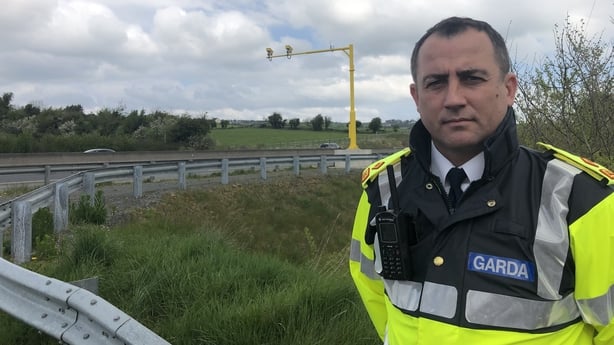The first stretch of the country's motorway network to have average speed cameras has gone live in Co Tipperary.
Motorists found to exceed the 120km speed limit over a 9km stretch of the M7 between junction 26 Nenagh and junction 27 Birdhill in both directions will be liable to an €80 fine and three penalty points.
They are giant in structure, built on large yellow poles erected high over the motorway, and were well signposted when they went live at 7am this morning.
While many may criticise them as more close monitoring of citizens, the objective is prevention rather than punishment, designed to change driver behaviour rather than penalise them, and experience elsewhere has shown this to be the case.
They have been piloted over the past year, and data shows there was frequent speeding on this stretch when there were low volumes of traffic, and strong weather, like hail storms, has resulted in serious accidents and deaths.
Compliance with the speed limit went from 70% to just below 90%, but gardaí and Transport Infrastructure Ireland believe more progress is needed.

Superintendent Andrew Lacey of Nenagh Garda Station said data shows that drivers tend to speed on sections of the motorway when there is less traffic and they believe it to be quiet, and this is compounded when there are sudden difficult weather conditions.
"Unfortunately, there have been six fatalities in the past eight years on this stretch of the road, which is so difficult and heartbreaking for the families involved, in addition to other collisions often caused by speed, which is a factor in many serious road accidents," Supt Lacey said.
"So far this year we've had 54 road deaths, 20 more than last year, and the hope is this system and others which may follow will reduce those statistics.
"The overall objective is to secure compliance with the road traffic speed limits and work towards a zero vision goal on the roads in relation to speed excess. The new system will be clearly identified for drivers along the route and it's hoped drivers will reduce their speed and then maintain that speed throughout their journeys."
The technology is widely used in the UK since 2000 and has resulted in a 36% reduction in serious road-related accidents and deaths.

The cameras are already in use on the Dublin Port Tunnel, where less than 1% of drivers are now exceeding the 80km speed limit there, down from 55% before installation.
Head of Communications at the AA Paddy Comyn said this is seen as a more fair and equitable means of getting motorists to be more speed compliant.
"They work by recording your speed at two different points. They don't capture your speed in a single flash. Instead, they'll monitor your speed over a length of the road," Mr Comyn said.
"In this way, people don't just slow down when they see the camera and then speed up again. This helps to keep the traffic flowing steadily, instead of stopping and starting, and help drivers to maintain a safe speed, so it's difficult enough to try and trick the cameras."
It monitors the cars from point A to point B. If the car reaches point B too quickly, the enforcement server will highlight a violation has occurred and this is then processed and issued to the driver.
In addition, the implementation of average speed cameras has been shown to actually decrease travel times, due to more disciplined traffic flows.
Mr Comyn said that there is also the added advantage that driving at lower speeds increases fuel efficiency for all vehicles.
The progress on the M7 will be monitored before they are rolled out elsewhere across the country.






